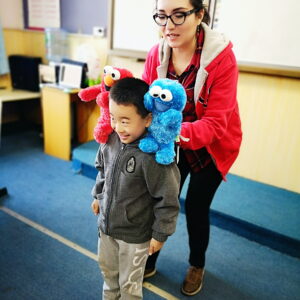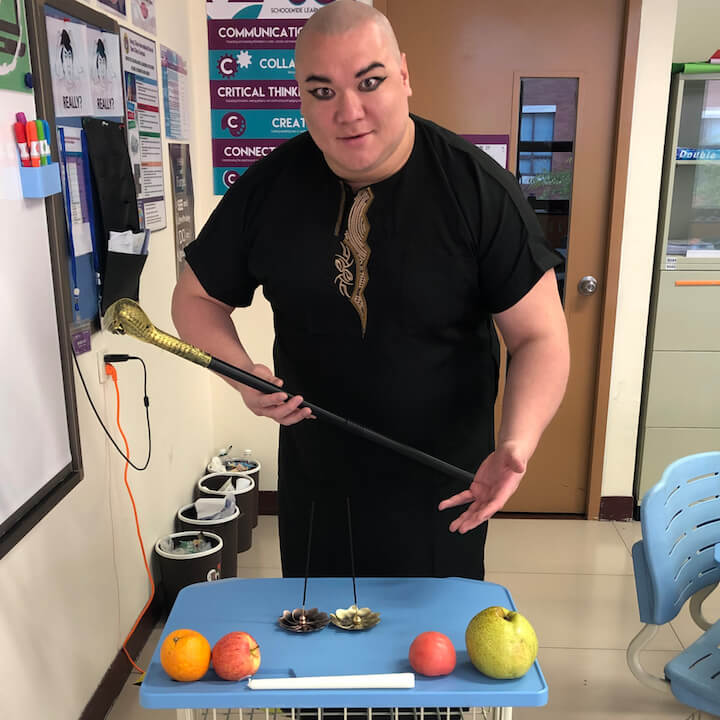Are you looking for new ways to engage your English language students? Would you like to get them up and moving and motivated, and also build their confidence with the language? Checking all the boxes might seem difficult, but a fun, student-centered way to do it is by using drama as an ESL teaching method.
If you’re new to teaching, you’ll want to get initial training and qualification with a TEFL certificate. You can explore our online TEFL courses to get started!
What does it mean to use drama when teaching ESL?
You’ve probably already incorporated a bit of drama into your lessons if you’ve had students read a dialogue from their textbooks out loud or do simple role-plays. This is a good warm-up to further drama activities.
Role-plays
Have students work to expand their dramatic skills when reading dialogues and doing role-plays by conveying the emotion behind the conversation and adding movements or gestures. To take it a step further, students can write their own dialogues and/or memorize their lines with the goal of presenting a short skit in front of the class.
Improvisation
Another way to use drama in the classroom is through improvisation. This spontaneous drama method works well with intermediate to advanced students, giving them a hypothetical situation that they must act out on the spot using their English vocabulary and language skills. For example, give pairs of students a situation involving two people. Try to choose something that could be funny, such as someone dining in a restaurant and getting terrible service. Assign students their roles, and ask them to act the scene out. You can also do improvisation activities with larger groups of students.
Class plays
And of course, organizing a class play is a great way to use drama with your students. You can start by reading a short, level-appropriate story or play in class. Then assign students to each role, or let them choose their role, and dedicate class time to learning lines and practicing their parts. The activity culminates in a class production of the play. Incorporate simple costumes and props if you can.
What are the benefits of using drama as a teaching technique in ESL?
Take advantage of students’ high energy levels
If you have an energetic group that enjoys your classes but has trouble sitting down for grammar and vocabulary drills, why not let them practice small skits that incorporate the target language?
Let your students take the lead
Another benefit is the opportunity for the students to learn in a relaxed environment that allows them to take the lead. Your students can become screenwriters, directors, actors, storyboard artists, costume designers, and technical experts (if you’re using technology in your classroom). The direction that the students take can help you as the teacher tailor your lessons to each individual group.
Break the ice
Practicing small skits and short plays is also an ideal way to break the ice in a rather quiet classroom filled with shy students. Acting out words, sentences, or even asking students to present their own name as a gesture are excellent ESL icebreakers.
How does drama help ESL students learn?
- Teaching language through drama gives students an opportunity to relax the mind while learning and retain knowledge better.
- Memorization of lines activates and trains the brain while connecting language with gestures.
- Acting helps students remember words and sentences.
- The use of the body on stage helps teachers get a total physical response (TPR) from your students, which is one of many effective ESL teaching methods.

What is the role of drama in teaching ESL?
A dialogue, skit, or play gives students context. Learning, memorizing, and practicing a drama allows students to interact with the content on a deeper level, engaging all four language skills: reading, speaking, listening, and writing (if they also make their own props for the stage, or if they take notes on their lines, for example).
Using drama to teach English builds team spirit, communication skills, and students’ confidence in their own English abilities. During a drama practice, students can make mistakes, experiment with language, and even learn to improvise if they forget a word or a line.
This flexibility and adaptability builds fluency and vocabulary knowledge, increasing students’ confidence even further. Memorizing and practicing lines makes a great addition to many more commonly used TEFL speaking activities.

How can drama be used in the ESL classroom to support instruction?
Let’s take a look at some of the many ways that class plays and other drama-based activities can create warm-ups and build your students’ skills as part of your ESL lesson plans.
Warm-ups
If you’re working on a play as a class, use small parts of scenes or single sentences to create the day’s warm-up to review the lines. How about playing a game of “telephone” using a line from the play you’re working on?
Reading skills, vocabulary, and grammar
When your students memorize their lines for a skit or play, they need to first read the lines, then grasp the content and understand the words and the grammar structures. This is an excellent entry into the target language. You can encourage your students to look up unknown words and practice the correct pronunciation. Remember to give them time to ask you questions about the content or unknown grammar.
Increasing retention
Students, and children, in particular, retain language through repetition. Saying the same lines over and over may seem boring to us as adults, but the better your students get at memorizing their lines, the more motivated they will be to repeat and practice them.
During the practices, try to mix things up and have students try different acting methods and movements. If they can still remember their lines, chances are that they are now storing them in their long-term memory.
You can read more about ESL games and activities for kids and teens here.

Practicing fluency
By repeating and practicing the lines, and also by experimenting with the language, your students can build their fluency in English. Try to include some exercises such as speed challenges (“Deliver your lines as fast as you can!”), funny twists (“Now deliver them as slowly as you can.”), or acting activities (“Deliver your part as if you were really sad/happy/excited/sleepy/angry/”). Being able to use language in a flexible way further supports fluency.
Writing
If you’re teaching an intermediate- or advanced-level class, you can even challenge your students to write their own play as a class project. Working as a team and being able to use their creativity and imagination can be a very rewarding activity for students.
Does drama as an ESL teaching method sound like something you’d like to try? No matter what age or level you teach, this technique offers a creative way to give students the opportunity to perform, play, and practice their language skills in context.








